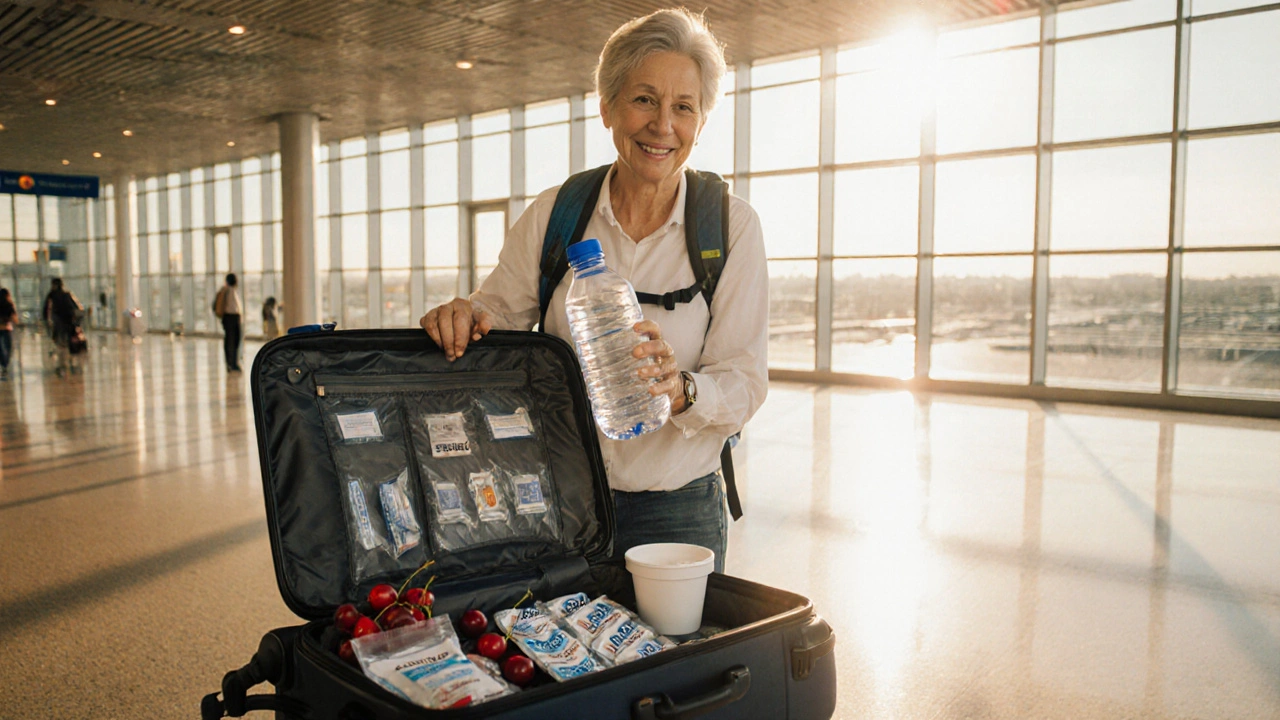Gout and Travel: How to Stay Comfortable While Exploring New Places
When dealing with gout and travel, the combination of a gout condition with the challenges of traveling. Also known as gout‑friendly journeys, it means you have to plan ahead to avoid painful flare‑ups while moving between time zones, climates, and cuisines.
Understanding gout, a form of inflammatory arthritis caused by high uric acid levels is the first step. The culprit, uric acid, a waste product that can crystallize in joints, builds up when the body either produces too much or fails to excrete it efficiently. Travel adds two extra variables: dehydration and changes in diet. Staying hydrated is a travel hydration, the practice of maintaining adequate fluid intake while on the move essential, because even mild fluid loss can concentrate uric acid and trigger a flare. Likewise, dietary management, adjusting food choices to keep purine intake low becomes trickier when you’re sampling local dishes, alcohol, or street food that may be rich in purines.
Key Considerations for a Gout‑Friendly Trip
First, pack enough of your prescribed medication—whether it’s a urate‑lowering therapy like allopurinol or an acute‑attack drug such as colchicine. Dosage timing matters: try to take medications at the same time each day, even across time‑zone shifts, to keep blood levels steady. Second, bring a reusable water bottle. Aim for at least 2‑3 liters of water daily; in hot climates or during long flights, increase that amount to replace sweat and cabin‑air dryness. Third, research your destination’s cuisine in advance. Look for low‑purine options like fresh vegetables, plain rice, and lean proteins, and keep high‑purine foods (red meat, organ meats, shellfish) and sugary drinks to a minimum.
Third, consider the impact of altitude and temperature. High altitudes can reduce oxygen saturation and increase blood viscosity, both of which may aggravate gout symptoms. If you’re headed to a mountainous region, give your body extra time to acclimatize and stay extra‑hydrated. Similarly, extreme heat can cause rapid fluid loss; carry electrolyte packets to replace salts lost through sweat. Fourth, manage stress. Travel logistics—flight delays, language barriers, crowded airports—can raise cortisol levels, potentially worsening inflammation. Simple stress‑relief tactics like deep breathing, short walks, or a quick yoga session can keep cortisol in check.
Finally, keep a small “gout‑travel kit” handy: your medication, a copy of the prescription, a list of emergency contacts, a hydration tracker, and a cheat‑sheet of low‑purine snack ideas (nuts, plain popcorn, fruit). Having these items within reach reduces anxiety and lets you respond quickly if a flare starts. By addressing medication timing, hydration, diet, altitude, temperature, and stress, you create a solid foundation that lets you enjoy sightseeing, business trips, or family vacations without the cloud of gout hanging over you.
The articles below dive deeper into each of these areas—covering everything from specific drug guidance to real‑world travel anecdotes—so you can fine‑tune your own gout‑friendly travel plan and hit the road with confidence.
Learn practical gout travel tips to stay pain‑free on vacation: hydration, diet, medication timing, footwear, and emergency planning for a smooth, flare‑free trip.



